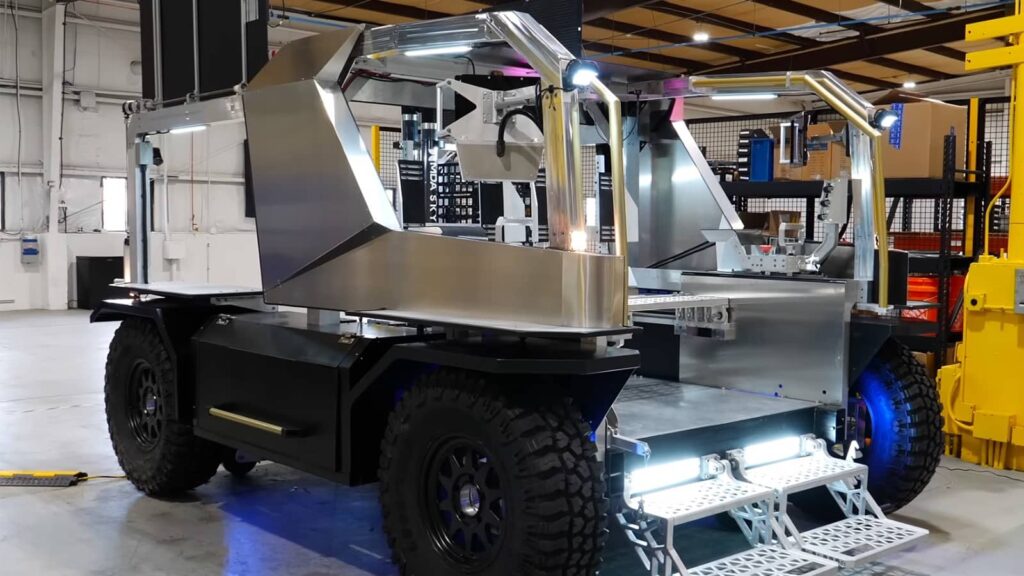In the race to return humans to the Moon, NASA’s Artemis program is setting the stage for a new era of lunar exploration. A crucial component of this ambitious endeavor is the Lunar Terrain Vehicle (LTV), designed to traverse the Moon’s surface with unprecedented efficiency. Among the proposed vehicles, the “Eagle” LTV from Lunar Outpost stands out with its innovative features, promising to redefine how astronauts explore our celestial neighbor.
The Eagle LTV: A Leap Forward
The Eagle LTV represents a significant evolution from the Lunar Roving Vehicles used during the Apollo missions. Here’s what makes it stand out:
-
Extended Range and Endurance: With the capability to travel over 20 kilometers on a single charge and operate for up to 8 hours, the Eagle LTV significantly expands the exploration radius for astronauts. This range is critical for investigating diverse lunar landscapes, especially in the resource-rich South Pole region.
-
Speed and Maneuverability: Designed to reach speeds up to 15 km/h, the Eagle LTV isn’t just about getting from point A to B; it’s about doing so with agility. This speed allows astronauts to cover more ground in less time, enhancing mission productivity.
-
Autonomous Operation: One of the most futuristic features of the Eagle LTV is its ability to operate autonomously. This means it can be programmed to perform tasks without human intervention, like transporting cargo or conducting preliminary site surveys. Such capabilities are reminiscent of the Mars rovers but adapted for human interaction, allowing astronauts to focus on high-value scientific tasks or rest while the vehicle works.
-
Cargo and Utility: The design includes a tow hitch, enabling the vehicle to pull additional cargo or equipment. This feature supports not just exploration but also the logistical needs of setting up a sustainable lunar presence, like moving supplies or aiding in the construction of lunar habitats.
Design Philosophy and Technology
The Eagle LTV has been conceptualized with both human and robotic exploration in mind, drawing from the latest in electric vehicle technology and autonomous systems:
-
Advanced Battery Technology: To cope with the Moon’s harsh environment, where temperatures can swing dramatically between extreme cold and heat, the vehicle employs state-of-the-art batteries capable of functioning in these conditions.
-
Robust Tires: Adapted for the lunar regolith, the tires of the LTV are designed to handle the abrasive and loose lunar soil, preventing the vehicle from getting stuck or suffering damage.
-
Solar Power Integration: While batteries provide the primary power, solar panels could be integrated to supplement energy during the long lunar day, ensuring the vehicle’s longevity during uncrewed operations.
The Role in Artemis Missions
The Artemis program aims not just to visit the Moon but to establish a long-term presence. Here, the Eagle LTV plays a pivotal role:
-
Scientific Exploration: By allowing astronauts to travel further from their landing sites, the LTV enables sampling and study over a much larger area, potentially uncovering new geological insights or resources like water ice.
-
Logistical Support: Between crewed missions, the LTV can be used for site preparation, cargo transportation, or as a mobile lab, supporting both NASA’s objectives and potential commercial activities on the lunar surface.
-
Safety and Redundancy: With autonomous capabilities, the Eagle LTV can serve as a backup for emergency scenarios, potentially retrieving stranded astronauts or delivering critical supplies.
Looking to the Future
The development of vehicles like the Eagle LTV isn’t just about the Moon. The technologies developed for lunar exploration could find applications on Mars or other planetary bodies, where similar environmental challenges exist. Moreover, the push towards autonomous systems in space could influence terrestrial technologies, particularly in logistics, mining, and exploration.
Conclusion
The Eagle Lunar Terrain Vehicle, if selected for the Artemis missions, promises to be more than just a mode of transport; it’s a mobile science station, a logistical tool, and a testament to human ingenuity in space exploration. As we edge closer to 2030, when astronauts will once again set foot on lunar soil, the Eagle LTV stands ready to carry them into the next chapter of lunar discovery, embodying the spirit of exploration that has always driven humanity to look beyond our world.
This vehicle, with its blend of autonomy, durability, and advanced tech, might just be the key to unlocking the Moon’s secrets and paving the way for sustainable human presence beyond Earth.

